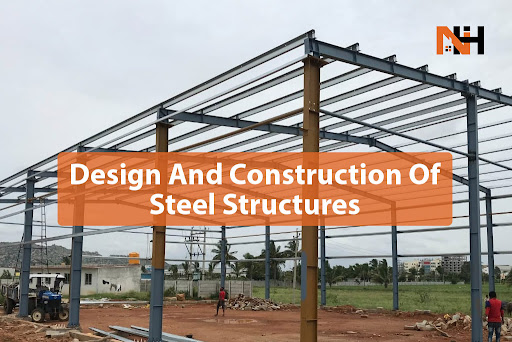
◈ Design and Construction of Steel Structures
Steel structures are integral to modern construction, offering remarkable strength, versatility, and durability. They are employed in a wide array of applications, from skyscrapers to bridges and industrial facilities. The design and construction of steel structures require careful planning, adherence to safety standards, and the implementation of advanced engineering principles. This article explores the key aspects of designing and constructing steel structures.
The Advantages of Steel Structures
Before delving into the design and construction
processes, it's essential to understand the benefits of steel structures.
1. Strength: Steel is renowned for
its incredible strength, making it ideal for supporting heavy loads, both
vertical and horizontal.
2. Durability: Steel structures are highly durable and can withstand harsh weather conditions, making them long-lasting.
3. Versatility: Steel's flexibility allows for complex and innovative designs, providing architects with significant creative freedom.
4. Sustainability: Steel is a recyclable material, contributing to eco-friendly construction practices.
Design Principles
Successful steel structure design relies on
adherence to key principles:
1. Load Analysis
* Understanding the loads a structure will bear is fundamental. This includes both live loads (e.g., people, equipment) and dead loads (e.g., the weight of the structure itself).
2. Safety Factors
* Safety factors are introduced to ensure structures can withstand loads beyond their design limits. Common safety factors include 1.67 for dead loads and 1.5 for live loads.
3. Material Selection
* Choosing the right grade of steel is crucial. Factors such as corrosion resistance, tensile strength, and yield strength must be considered.
4. Design Codes and Standards
* Following established design codes, such as the American Institute of Steel Construction (AISC) codes, is essential to ensure structural integrity and safety.
5. Structural Analysis
* Utilizing software and mathematical models, engineers perform structural analysis to evaluate the design's stability and integrity.
Construction Process
1. Site Preparation
The construction process begins with site preparation. This involves clearing and leveling the ground, ensuring it can support the steel structure's weight. Proper foundations are critical to ensure stability.
2. Fabrication
Steel members are fabricated in specialized factories, where they are cut, shaped, and welded into the required structural components. Quality control is crucial to ensure the accuracy and strength of these components.
3. Transportation
Once fabricated, the steel components are transported to the construction site. This process requires careful planning to ensure the safe and efficient delivery of these often massive pieces.
4. Erection
Erection involves the assembly of the steel structure on-site. This requires skilled labor and specialized equipment, such as cranes and lifts. The sequence of assembly must follow precise engineering plans.
5. Connection Design
The design of connections between steel members is a critical aspect of construction. These connections must provide both structural integrity and flexibility to accommodate forces such as wind and seismic loads.
6. Safety Measures
Safety is paramount during construction. Workers must follow strict safety protocols to prevent accidents and ensure a secure working environment.
7. Quality Control and Inspection
Regular inspections are essential to verify the quality of the steel components and their correct installation. Any defects or issues should be addressed promptly.
8. Protective Coatings
To enhance durability and protect against corrosion, steel structures are often coated with paint or other protective coatings.
Conclusion
The design and construction of steel structures require a meticulous approach, from the initial planning stages to the final quality control. These structures offer unparalleled strength, durability, and versatility, making them a favored choice for a wide range of construction projects. Adherence to safety standards, precision in design, and quality in construction are the cornerstones of successful steel structure projects.
For more information on this topic, refer to the
American
Institute of Steel Construction (AISC)
for industry standards and resources.
